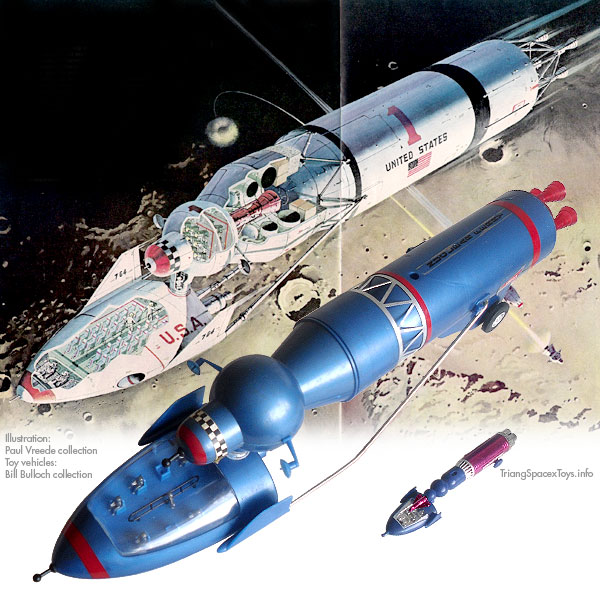
The exact origin of the Nuclear Ferry was identified by space historian David Portree, after Bill Bulloch had asked him to take a look at some pictures of toys. It was a spacecraft proposed by the Astronautics Division of Ling-Temco-Vought in a thorough study for NASA about maintaining a presence on the Moon and ferrying personnel and supplies back and forth from Earth. A condensed version of the study appeared in an American Astronautical Society report in 1964, which included the image below (click on image for the technical description in a new window).
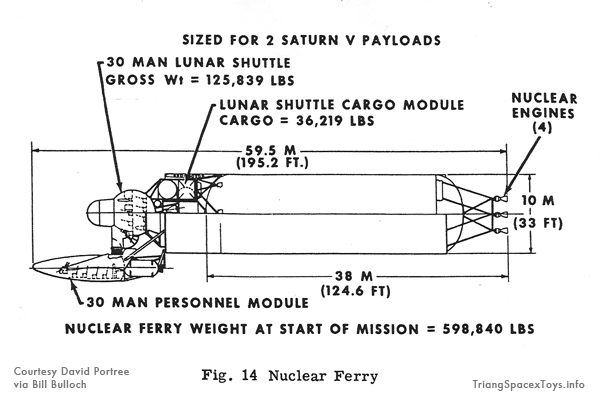
The Nuclear Ferry basically consists of three parts: the nuclear ferry itself (the rear of the tubular main body) which stays in space and does the ferrying; the lifting body-type shuttle that transports passengers between Earth and ferry, while a lunar shuttle sits at the front of the craft.
This proposed spacecraft must have been impressive enough that it was included in a feature about forthcoming space developments in Life magazine, published 2 October 1964. Beautifully illustrated by Robert McCall, the ferry is seen upon arrival over the moon, where passengers are transferring to the lunar shuttle before descending to a moon base. In the background a second lunar shuttle has just launched to join a second ferry flying in the same direction. The caption reflects the gist of the LTV study concerning this spacecraft.
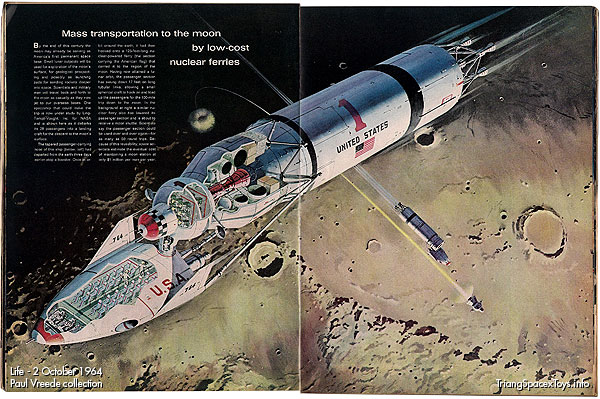
Nuclear Ferry illustration by Robert McCall in Life magazine, 1964
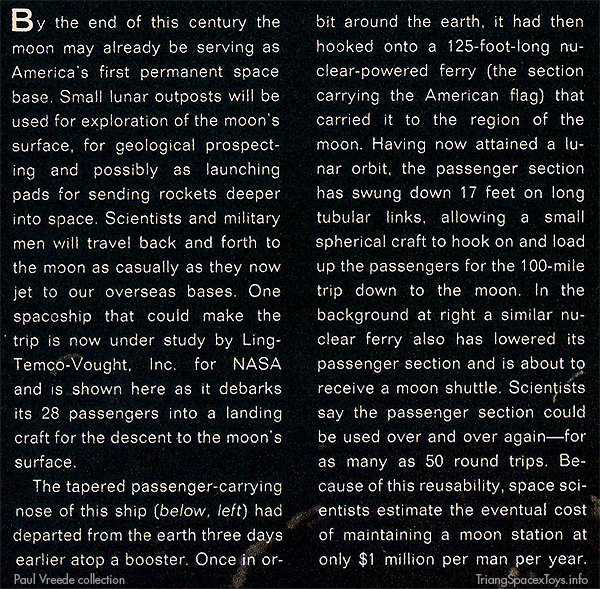
The McCall illustration was next published in Britain in Look and Learn magazine #169, published 10 April 1965, where a young Bill Bulloch discovered it on the centre spread. The caption here is largely the same as the original in Life, albeit slightly rearranged and replacing the Ling-Temco-Vought name with "an American engineering company."
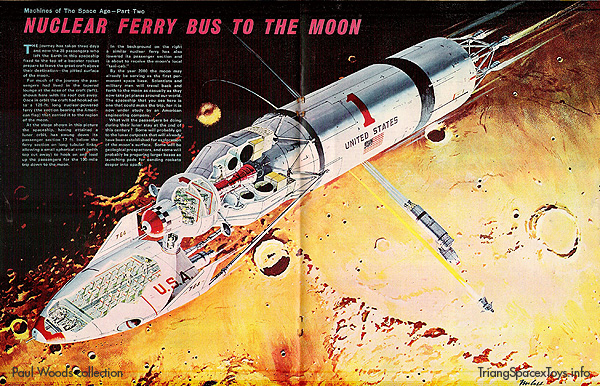
Nuclear Ferry illustration in Look and Learn magazine, 1965
Be it in Life or Look and Learn, an unknown manufacturer in Hong Kong must have seen the McCall illustration as well and turned it into a downright lovely toy (it may possibly have been Tai Hing, for the blue plastic is identical to that used for their Prospector toy). Featuring remote control and flashing lights in the exhaust, it is a good 46 cm/ 18 in long and comes with a detachable personnel shuttle and a spring-loaded ejectable lunar module at the front. As in the McCall illustration there are two passengers making their way to the rear of the shuttle and up the ladder to transfer into the lunar module, but to see them, the toy designers replaced McCall's cutaway with a large roof window.
Next, Jack Rosenthal will have decided it would make a good addition to his Project Sword fleet, and later as another appropriate vehicle to expand the Spacex range with. A close look at the box art will reveal that this is a close adaptation of McCall's illustration.*
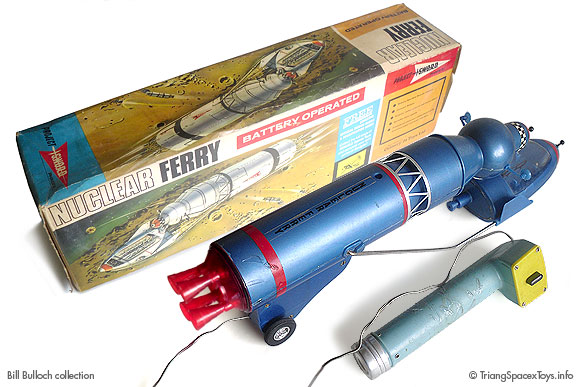
As with every Project Sword toy, the Nuclear Ferry came with a pin badge (red Commander version) as well as a manual to entice further purchases of other vehicles. Being a large and probably more expensive toy, the Ferry merited a spread of its own in the manual.
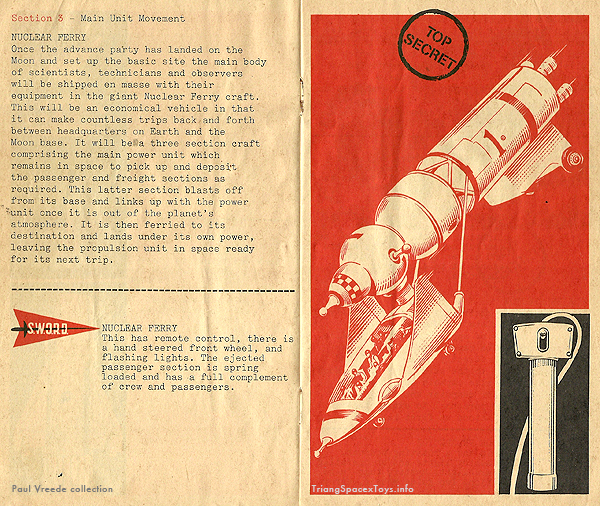
Although the Nuclear Ferry wasn't featured in the Project Sword annual, it did appear in two text stories in TV21 #176 and the 1969 TV21 annual. Especially the latter is quite a piece of product placement, explaining in three parts how Project Sword is intended to operate and showing justabout every toy in the range.
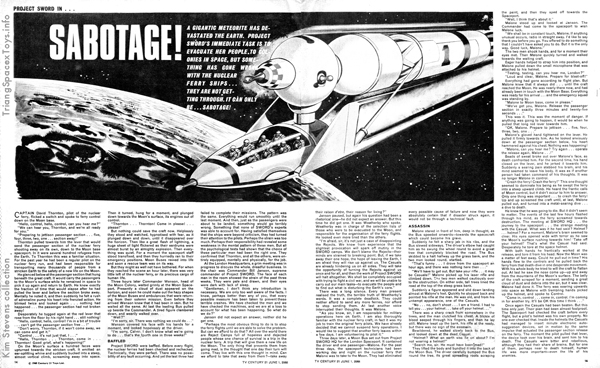
Sabotage story from TV21 #176, published 1 June 1968 (above)
Battle Breakdown Phase 3 story in 1969 TV21 annual (below)
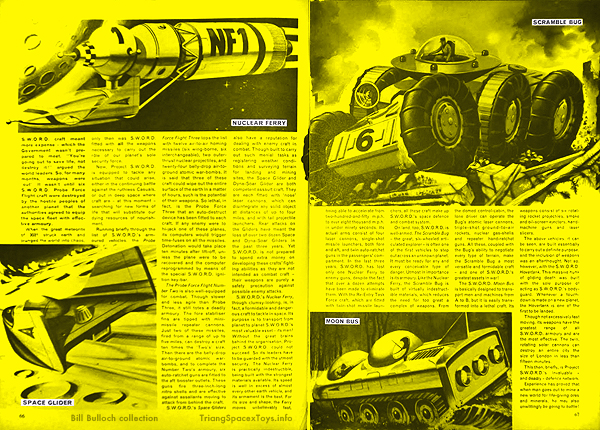
*: A sweet anecdote - a couple of years before Robert McCall passed away, Paul Woods wrote his first blog post about the Project Sword Nuclear Ferry. Space author Rob Godwin saw this, and sent the pictures of the blog post to McCall himself, whom he knew. McCall was "surprised and delighted" to discover his painting had been turned into such a nice toy. The original painting is now in the University of Arizona Museum of Art. back to text